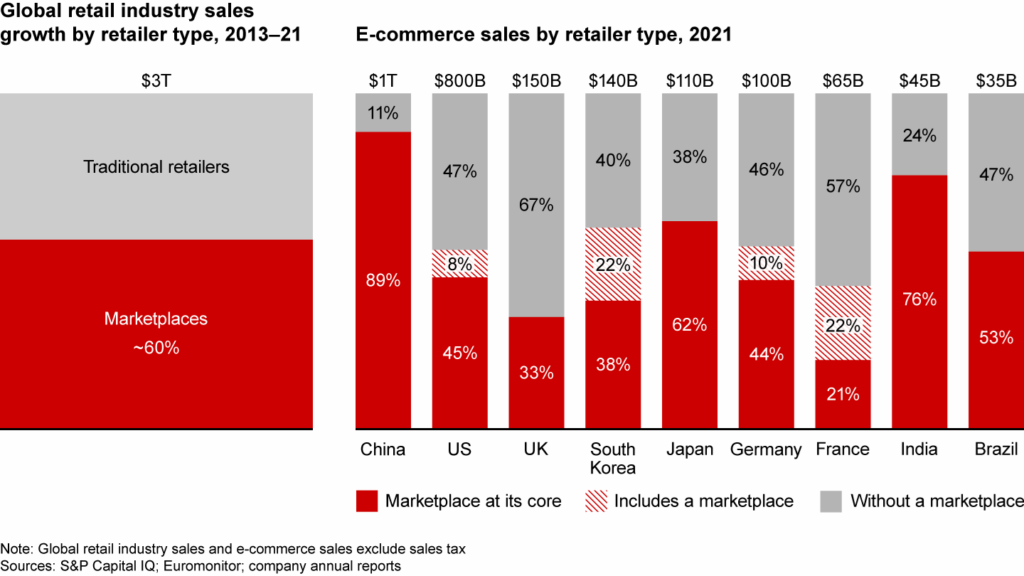The world’s ‘digital native’ retailers – retailers that initially operated exclusively online – are set to more than double their share of the industry’s revenues by 2030 and triple their share of profits.
The Bain report, The Future of Retail: The Age of Convergence, says the focus on profitability, scale and new revenue sources is set to drive a growing convergence between old and new retail players.
Bain says retail ecosystem players, such as Amazon, and other online marketplaces gained considerable momentum over the last decade, capturing about 60% of global retail growth between 2013 and 2021.

Source: Bain & Company, 2022
This trend is set to continue with digital native retailers set to more than double their revenue share from 15% to 35% by 2030 as loss-making retailers fail and disappear from the playing field.
But Bain concludes that the fastest phase of growth for digital-first retailers looks likely to be over, as investors expect, at a minimum, basic profitability from these businesses and past ample funding dries up. Traditional retailers, meanwhile, will increasingly provide stiffer competition as they continue to invest in digital capabilities and platforms, the analysis suggests.
The Bain study finds that competition for an omnichannel advantage is driving a convergence in both talent and strategy between traditional retailers and digital insurgents.
By 2030, Bain & Company predict that half of the retail profits will come from new “beyond trade” revenue sources including third-party marketplace activity, data monetisation including digital advertising, businesses-to-business services and consumer financial services. Traditional retail activities including the sale of goods, by comparison, are unlikely to drive even modest profit growth in the years to come.
As a result, retailers are upping their investment in digital, just as digital retailers are looking to acquire bricks and mortar storefronts. The search for capital to support these transformations will encourage a new wave of deals as retailers look to scale rapidly.
Marc-André Kamel, a Bain & Company partner and leader of the firm’s global Retail practice, comments that pre-pandemic, the momentum was with digital natives. He opined that amid store overcapacity, many traditional retailers were struggling to adapt to the rise of e-commerce, competition from discounters, and waves of innovation.
“At the same time, ecosystem players such as Amazon were gaining share, partly by supporting their retail offering with profit generated by their extensive non-retail activities,” he continued.

“There are early signs, however, that traditional and digital retailers are converging towards a similar strategy. The two-way flow of talent between some of the youngest and oldest names in the industry is a clear sign of the convergence that will be one of the defining characteristics of retail over the next decade.”
Marc-André Kamel
Four key strategies to secure success in the new age of convergence
Undergo a customer epiphany. Customers, rather than the channel, will increasingly shape decisions as retailers create a comprehensive ecosystem centred around deeply understanding their customers.
Excel at omnichannel 3.0. Retailers will have to invest carefully and make trade-offs as they look to standout amid a world of omnichannel competitors. This means coming to grips with proliferating ‘channels’ and being ready for the next wave of technology including web3, blockchain and the metaverse.
Grow beyond trade. With the profit pool from traditional retail activities unlikely to grow, retailers will have to find new sources of value creation.
Play talent Tetris. Tech-led innovators will continue to have a significant advantage in attracting top talent. Retailers must play a tricky game of “talent Tetris” to become the employer of choice in tight labour markets.





